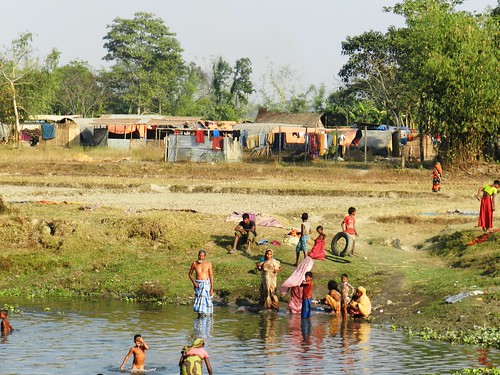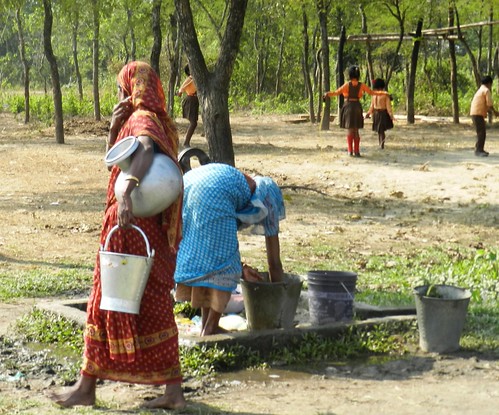Over four months have passed since violence broke out in the Bodoland Territorial Area District (BTAD) in July 2012. In this special series on Bodoland violance, we bring stories of violence, desperation, and also hope from this “tinderbox.” This series has been made possible with financial support from Indian Muslim Relief Committee (IMRC).
By M. Reyaz, TwoCircles.net,
Gosaigaon/Assam: As I reach Sabkata village in Gosaigaon sub-division in Kokrajhar district, along with my local guides, I see some women washing clothes on the bank of a canal and young boys bathing. On both sides of the canal are two relief camps that have come up after villagers came back from the camp.

On both sides of this canal poor Muslim villagers from at least four villagers are living sub-human condition.
As of November end, there were still 10 camps in Gosaigaon sub-division alone, according to official government statement. Our sources in the Gosaigaon administration confirmed, however, that there were still over 25 camps in this sub-division alone.
The number of people still in camps varies from 10,000 to 35,000. Although most camp dwellers acknowledged receiving relief packages in initial days, that included rations; they have not been provided proper compensation and rehabilitation packages so that they could rebuild their houses.
As this story is being filed, we get ground reports from Gosaigaon from our sources that at least in10 relief camps including Howriapet, Sabkata and Matiapara no ration is being provided by the government, driving thousands of people to starvation.
When riots broke and they heard Bodo mob firing and burning houses, most villagers ran to relief camps in neighboring district or safer places. Gradually villagers are coming back, but with no or little compensation and rehabilitation package these villagers are forced to live in shanty camps, even though winter is setting in.
While in Bodo areas villagers are being “rehabilitated,” that means they get Rs 20, 0000 and corrugated iron (CI) sheets. In Muslim villages, owing to strict document verification and long drawn process, many villagers came back on their own from camps in Dhubri or nearby areas. However, with burnt houses, they are forced to live in congregation in new camps near villages. The rehabilitation hence in this region has not been as smooth, although few people did get the money.

Most of the relief camps are still over crowded.
In a large camp set up near the Sabkata police outpost – now manned by SSB – people from at least four villages, over 300 families, are still living, with no basic amenities like clean drinking water, or toilets. The lone tube-well of the school is the only source of drinking water. Some local NGOs and individuals are trying to provide the basic necessities.

Clear drinking water, toilets and sanitation are lacking in most camps.
Health camps have been put up in bigger shelter like Howriapet, but that is not sufficient. Although there is no conclusive data, but one of the worst affected been women, particularly those who were pregnant. In Matiapara camp, we met at least three women who gave birth to their babies in camps. They did not receive any medical help from the government they say, and are not very hopeful about their future either.

Many women who ran for life for were pregnant at the time. These three women (now in Matiapara camp) gave birth to their babies in camp, without any medical aid.
Live and let live:
Howriapet has one of the biggest existing camps. As we gather children surround us excited to be clicked, oblivious of the misery they are going through. At several places in the camp, residents have put up small banners “Live and let live,” in Bengali and in English.

Innocent Joy! Children at Howriapet camp, oblivious of the misery they are going through.
That’s the general sense of villagers as they want to get back to work and life. But when there is gun trotting mob, and workers being killed at workplace, there is little scope for reconciliation.
The newly appointed Sub-Divisional Police Officer (SDO) of Gosaigaon, young IPS officer Nilesh Sawarkar, aptly said: “The situation is under control. But this area is like tinderbox, even a small ignite can flare up into storm.”

